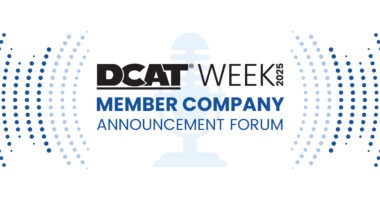Unpacking the Latest on Pharma, Trade & Tariffs: What May Be Next?
Global volatility on the trade front continued this week as the US put a 90-day pause on implementing its plan for reciprocal tariffs on a country-by-country basis, but uncertainty remains, particularly for certain trading partners, notably China. What is the impact on the pharma industry, and what may in store.
Global trade policy remains in flux
Global trade policy, in the form of tariffs, remains a large unknown as evolving US trade policy took another turn this week (April 9, 2025) with the Trump Administration announcing that it would place a 90-day pause (until July 9, 2025) on the implementation of so-called “reciprocal tariffs” on US trading partners that had been scheduled to take effect on April 9, 2025. Last week (April 2, 2025), the Trump Administration laid out its plan that imposed an individualized reciprocal higher tariff on the countries with which the United States has the largest trade deficits while continuing a 10% baseline tariff on all countries, with the exception of China. China, which had issued trade countermeasures in response to the pending reciprocal tariffs imposed on it, is subject to a 125% import tariff announced by the White House on April 9, 2025, plus an additional 20% fentanyl-related tariff already imposed in February and March, effectively creating a 145% tariff rate on imports to the US from China.
The Trump Administration first laid out a plan for imposing reciprocal tariffs in February (February 2025) as a means to counter non-reciprocal trading arrangements with its trading partners and as a way to improve US competitiveness, including in manufacturing. It put forth a plan to determine the level of reciprocal tariffs with respect to each foreign trading partner by examining the following on a country-by-country basis:
• Tariffs imposed on US products;
• Unfair, discriminatory, or extraterritorial taxes imposed by US trading partners on US businesses, workers, and consumers, including a value-added tax, referring to a type of consumption tax that is levied on the incremental increase in value of a good or service at each stage of the supply chain;
• Costs to US businesses, workers, and consumers arising from nontariff barriers or measures and unfair or harmful acts, policies, or practices, including subsidies, and burdensome regulatory requirements on US businesses operating in other countries. ”
• Policies and practices that cause exchange rates to deviate from their market value, wage suppression, and other policies that reduce US competitiveness; and
• Other practice that, in the judgment of the United States Trade Representative, in consultation with the US Secretary of the Treasury, the US Secretary of Commerce, and the Senior Counselor to the President for Trade and Manufacturing, imposes any unfair limitation on market access or any structural impediment to fair competition with the market economy of the US.
Reciprocal tariffs, then, are calculated as the tariff rate necessary to address bilateral trade deficits between the US and each of its trading partners. These reciprocal tariffs, which were scheduled to go into effect on April 9, 2025, were in addition to certain country- and product-specific tariffs already imposed by the Trump Administration on certain countries, including Mexico and Canada.
Impact on the bio/pharma industry
What remains uncertain for the bio/pharmaceutical industry is how tariffs will be imposed globally and on country-by-country basis and specifically to the bio/pharmaceutical industry. While the imposition of reciprocal tariffs by the US against its trading partners has been paused for 90-days (until July 9, 2025) to enable further negotiations on a country-by-country basis, industry-specific tariffs are still possible. Earlier this week (April 8, 2025), news reports of comments made by President Donald Trump signaled that the Administration is considering specific tariffs on pharmaceutical imports to the US as a means to incentivize US domestic pharmaceutical manufacturing and lower the pharmaceutical trade deficit of the US.
Key questions that arise are at what level would such tariffs apply (finished drug products, active pharmaceutical ingredients) and what other tariffs may be placed on other inputs used in the manufacture of pharmaceuticals on a product-specific basis or as part of overall US trade policy. Historically, pharmaceuticals have largely been exempt from tariffs under agreements by participating countries in the World Trade Organization, which includes 166 countries, representing approximately 98% of overall global trade, but the trade/tariff situation for pharmaceuticals is now very much in flux. For the bio/pharma industry, as with all industries, tariffs raise concerns over increased costs, impacts on supply chains and manufacturing operations, and lowering end-market demand arising from overall global economic uncertainty and resulting downward pressures. Key issues to watch for in the upcoming weeks are how negotiations with the largest trading partners of the US in pharmaceuticals and pharmaceutical ingredients unfold, particularly with the European Union (see related story, Pharma CEOs Speak on the Fallout from Evolving US–EU Trade Policy) as well as other trading partners on a pharma ingredient basis, particularly to the generics industry, including India and China.






